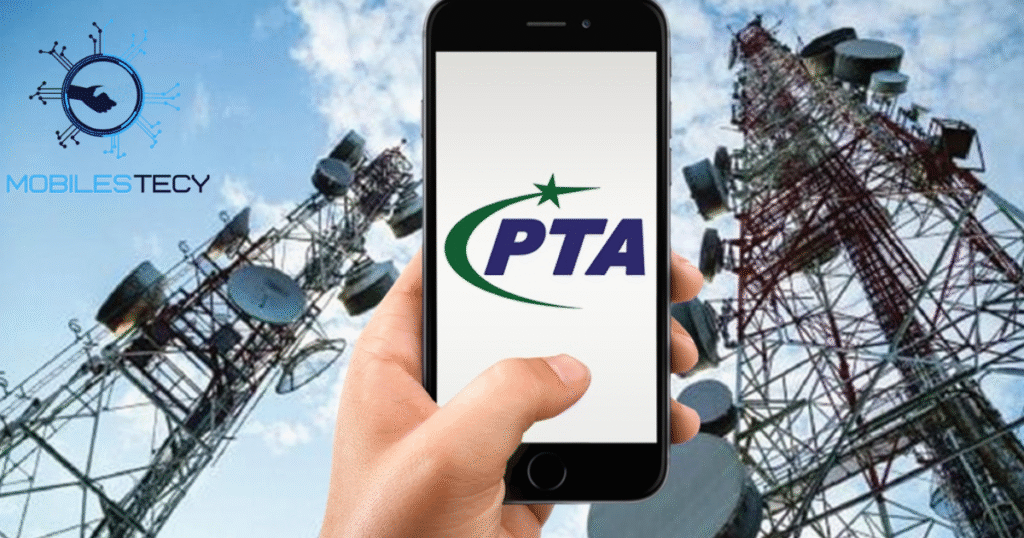The telecommunications industry relies on interconnected systems that enable seamless communication. Whenever you make a call, multiple networks may cooperate in delivering. This interconnected structure ensures reliability, accessibility, and efficiency across diverse operators. Understanding these hidden dynamics helps appreciate the real complexity behind phone services. One crucial component in this system is the Mobile Termination Rate.
Mobile Termination Rate (MTR) refers to fees between mobile network operators. When one user calls another across networks, the originating operator pays. This payment goes to the receiving operator for completing the connection. It is a wholesale cost defined and regulated by telecom authorities. Such regulation prevents unfair practices and ensures affordability for everyday consumers.
MTR plays a key role in shaping telecom markets and competition. High charges can disadvantage smaller operators compared to dominant market players. On the other hand, reducing MTR promotes fairer access and affordability. It directly affects call tariffs, influencing consumer costs and communication accessibility. Therefore, MTR is vital for consumers, regulators, and telecom companies alike.
Table of Contents
Understanding Mobile Termination Rate

Mobile Termination Rate, often called MTR, is a regulated telecom charge. It represents the amount paid between networks for delivering cross-operator calls. When a customer of Operator A calls Operator B’s subscriber, MTR applies. The originating operator compensates the terminating operator for network usage resources. This ensures fairness and sustainability within the entire telecommunications infrastructure globally.
MTR is generally set by regulatory authorities overseeing national telecom frameworks. These authorities prevent dominant operators from exploiting their position through high charges. Regulation ensures smaller companies can compete effectively in saturated telecom markets. It further promotes balanced growth across networks serving millions of active subscribers. Without regulation, unfair practices could easily harm both consumers and operators.
The principle behind MTR lies in infrastructure cost-sharing among multiple operators. Every call requires network elements like towers, switches, and signaling pathways. Since these resources are costly, operators charge fees to recover expenses. This mechanism guarantees that telecom providers can sustain reliable nationwide connectivity. Ultimately, MTR reflects the cooperative nature of modern communication technologies.
Why Does Mobile Termination Rate Exist?
The existence of MTR stems from the interconnected structure of telecommunications. Multiple operators serve different subscribers, yet they must remain interconnected seamlessly. Without MTR, one operator would bear excessive costs handling foreign traffic. This imbalance could disrupt industry stability, harming service quality for users. Thus, MTR plays a vital role in preserving financial equilibrium.
MTR ensures that operators receive compensation when completing calls from competitors. It encourages interconnectivity and guarantees subscribers can reach any desired recipient. The system prevents monopolies from exploiting smaller players through unfair pricing. By creating structured payment flows, MTR sustains fairness across diverse providers. This mechanism ensures stable communication regardless of operator differences nationwide.
Additionally, MTR creates a revenue stream for telecom companies worldwide. For large operators, incoming call fees contribute significantly to overall revenue. For smaller networks, regulation prevents disproportionate financial burdens during interconnection. Thus, MTR safeguards the business environment across both established and emerging markets. It strengthens long-term industry sustainability through balanced resource utilization strategies.
Regulatory Challenges in Adjusting Mobile Termination Rates

Regulators often encounter strong opposition from major telecom operators when proposing reductions in Mobile Termination Rates (MTRs). Large operators argue that lowering these charges could negatively impact their revenue streams and overall profitability.
Additionally, telecom market conditions differ widely across regions, making a single global regulatory approach impractical. Policies effective in Europe may not necessarily work in emerging markets across Africa or Asia, where infrastructure investments and market maturity vary considerably.
Impact of Mobile Termination Rate
MTR plays a central role in shaping the financial performance of telecom operators. Higher termination rates typically favor large, established companies, as they receive more incoming traffic and therefore more revenue. Meanwhile, smaller or newer operators often pay more in termination fees while receiving less in return, creating competitive disadvantages. Over time, this imbalance can limit competition and reduce market diversity, underscoring the need for regulatory oversight to maintain fair market conditions.
Consumers also feel the effects of MTR in their daily communication costs. When termination rates are high, off-net calls calls made between different operator networks tend to be more expensive. This can discourage free communication and limit consumer choice. In contrast, lowering MTRs generally leads to reduced calling costs, improving affordability and accessibility nationwide. Lower rates therefore contribute directly to consumer welfare.
Furthermore, adjusting MTRs influences the overall competitive landscape of the telecom sector. Reduced termination charges give smaller operators greater opportunity to compete, resulting in more service options, improved quality, and better pricing for consumers. In this way, MTR acts as both an economic regulator and a consumer protection mechanism, promoting innovation and market fairness.
Future of Mobile Termination Rate

The future of MTR is shifting due to emerging communication technologies. Voice over IP services like WhatsApp, Skype, and Zoom dominate worldwide. These applications bypass traditional call networks, reducing reliance on termination fees. As adoption grows, regulators may reconsider the long-term role of MTR. Thus, technological disruption significantly reshapes traditional telecom revenue streams today.
Many regions are already moving toward “bill-and-keep” interconnection models. Under this system, operators recover costs directly from their own subscribers. No fees are exchanged between providers for terminating voice traffic. This eliminates MTR while ensuring operators remain responsible for infrastructure investment. Such models encourage efficiency and transparency within the telecom business ecosystem.
Nevertheless, traditional voice calls remain highly relevant in developing markets. In these areas, MTR still plays a critical economic role. Regulators carefully balance affordability with sustainability of telecom operators’ infrastructures. As 5G technology and beyond roll out, data-based services dominate further. Ultimately, MTR’s importance may decline, but its legacy remains significant.
Benefits of Lowering Mobile Termination Rate
Lowering MTR directly reduces off-net call costs for everyday subscribers. Cheaper tariffs improve communication access, supporting both businesses and households equally. It encourages competition by allowing smaller operators to compete effectively. Consumers gain choice, affordability, and improved service quality within the market.
Lower termination rates promote innovation and investment in telecom infrastructure nationwide. Operators focus on data services, digital platforms, and next-generation technologies. This transition stimulates economic activity and drives digital inclusion for communities. Ultimately, consumers and industries both benefit from progressive regulatory reforms globally.
- Mobile Termination Rate ensures fair compensation between networks handling call traffic.
- Regulators control MTR levels to prevent monopolistic abuse by dominant operators.
- Lower MTR reduces consumer call tariffs, especially for costly off-net calls. Affordable pricing strengthens accessibility and boosts digital inclusion for all.
- High MTR benefits incumbents but creates challenges for smaller market players. This imbalance discourages competition, requiring continuous regulatory intervention globally.
- Future trends show declining MTR relevance with rising internet-based communication.
Faq’s
What is the meaning of Mobile Termination Rate in telecom?
Mobile Termination Rate is the fee operators charge each other. It applies when one operator delivers calls to another operator’s subscriber.
Why do regulators control and frequently reduce Mobile Termination Rates?
Regulators reduce MTR to ensure affordability and fair competition. Lower charges promote consumer welfare and sustain smaller telecom operators fairly.
How does Mobile Termination Rate impact consumer call tariffs daily?
High MTR increases off-net costs, making calls relatively expensive. Lower MTR makes communication affordable, encouraging wider mobile network usage.
Which operators usually benefit more from higher Mobile Termination Rates?
Large operators benefit since they receive higher incoming call volumes. Smaller operators often pay more than they actually receive back.
What is the future of MTR with modern communication technologies?
Internet-based platforms reduce reliance on traditional voice call revenues. Trends suggest MTR may eventually decline or disappear completely worldwide.
Conclusion
Mobile Termination Rate remains a vital component of modern telecom systems. It ensures operators share costs fairly when delivering calls across networks. Without this mechanism, competition would weaken, harming consumers and industry stability. Regulators therefore monitor and adjust rates to protect public and industry interests. The balance between affordability and sustainability drives fair communication globally.
Consumers directly experience the impact of MTR through their daily communication. High rates increase off-net costs, limiting free interaction across networks. Lowered rates promote inclusivity, affordability, and improved access to mobile services. This strengthens both individual welfare and collective national economic opportunities. Ultimately, consumer benefits highlight the importance of careful MTR regulation.
The future of MTR is shaped by technology and innovation. Internet-based services challenge traditional telecom models, reducing dependence on termination rates. Emerging “bill-and-keep” systems further redefine interconnection and revenue distribution worldwide. As 5G expands, data-driven services dominate, reshaping communication industry economics. Still, MTR’s legacy remains crucial in building today’s telecom landscape.
Read more latest Articles on Mobilestecy.com








